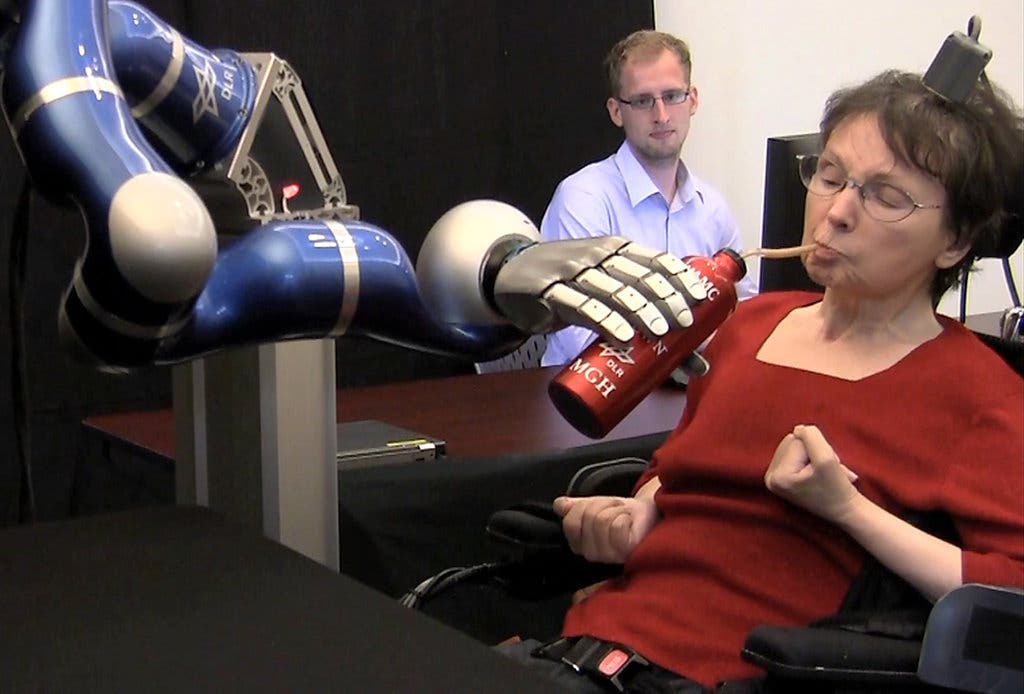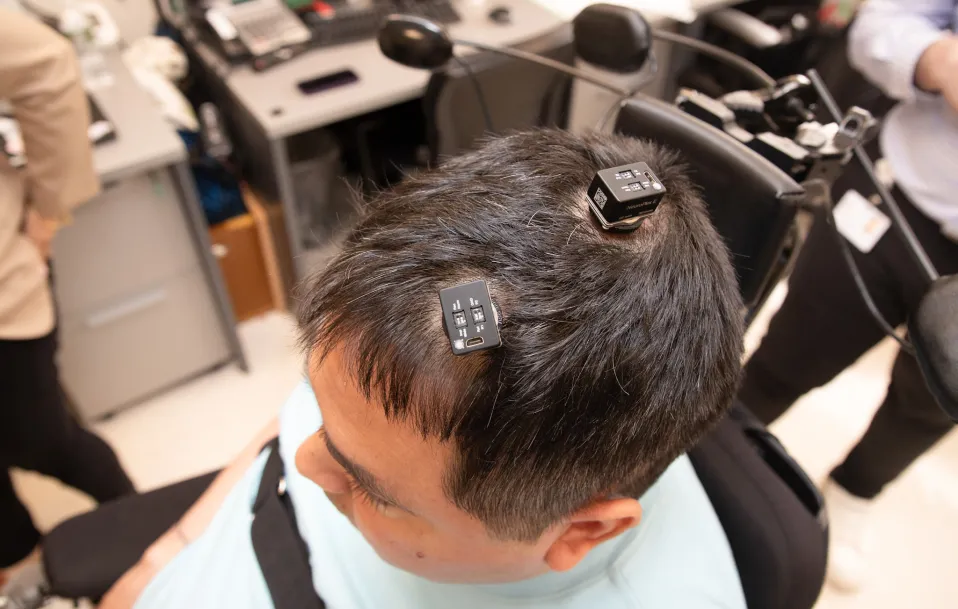“Cathy Hutchinson used a mind-controlled robotic arm to drink coffee.”
By Katie Moisse
Cathy Hutchinson is one of two tetraplegic patients able to reach and grasp with a robotic limb linked to tiny sensor in her brain, according to a study published today in the journal Nature. The device, called BrainGate, bypasses the nerve circuits broken by the brainstem stroke and replaces them with wires that run outside Hutchinson’s body. The implanted sensor is about the size of a baby aspirin.
“You can go from the brain, which seems to be working quite well, directly to a device like a computer or a robotic arm,” said BrianGate developer John Donoghue, director of the Institute for Brain Science at Brown University in Providence, R.I. “This can help restore independence to a person who was completely reliant on other people for every activity, whether it’s brushing their teeth, eating their dinner or taking a drink.”
Hutchinson, who has been unable to move or speak for 15 years, had the 96-channel sensor implanted in her brain’s motor cortex in 2005. Since then, the BrainGate team has been fine-tuning the system to give her back some of the control she lost.
“Having control over your life restores dignity,” said Donoghue. “If you just watch her reaction after she picks up the cup and takes and drink, that smile captures everything.”
For most people, reaching and grasping is effortless. But the simple movement is guided by a complex pattern of brain activity, according to Donoghue.
“That’s what’s so amazing about the brain,” he said, describing the “social network” of neurons working together to plan, execute and review the minutest movements. “It’s an incredible processor.”
With its hair-like electrodes, the BrainGate sensor taps into the flurry of brain activity, recording electrical signals that can be translated into movement commands.
“It’s like learning a language,” Donoghue said of the translation process, a series of mathematical calculations that copy the brain’s processing ability. “As we understand more and more about the brain, we’ll be able to copy more and more.”
BrainGate also allows Hutchinson to move a computer cursor so she can communicate. But the device is not quite ready for prime time, Donoghue cautioned.
“Currently patients have a plug on their heads and need to be connected by to a cart full of electronics,” he said. “We need to replace it with a wireless system.”
Donoghue is collaborating with Arto Nurmikko, a neuroengineer at Brown, to do just that.
“His group has developed a wireless transmitter the size of a matchbox that goes under the skin that sends signals to a laptop, and ultimately something like a smartphone,” said Donoghue. “That’s going to require some further testing and development, and FDA approval. But I hope within five or 10 years, it’s out there.”
While the BrainGate system can currently control an external device, like a robotic arm, it could one day control a person’s muscles.
“To make a paralyzed person’s muscles move, you can stimulate them with an electrical wire,” Donoghue said. “Instead of controlling something outside of body, you could connect BrainGate to the muscles.”
“Currently patients have a plug on their heads and need to be connected by to a cart full of electronics,” he said. “We need to replace it with a wireless system.”
Donoghue is collaborating with Arto Nurmikko, a neuroengineer at Brown, to do just that.
“His group has developed a wireless transmitter the size of a matchbox that goes under the skin that sends signals to a laptop, and ultimately something like a smartphone,” said Donoghue. “That’s going to require some further testing and development, and FDA approval. But I hope within five or 10 years, it’s out there.”
While the BrainGate system can currently control an external device, like a robotic arm, it could one day control a person’s muscles.
“To make a paralyzed person’s muscles move, you can stimulate them with an electrical wire,” Donoghue said. “Instead of controlling something outside of body, you could connect BrainGate to the muscles.”



